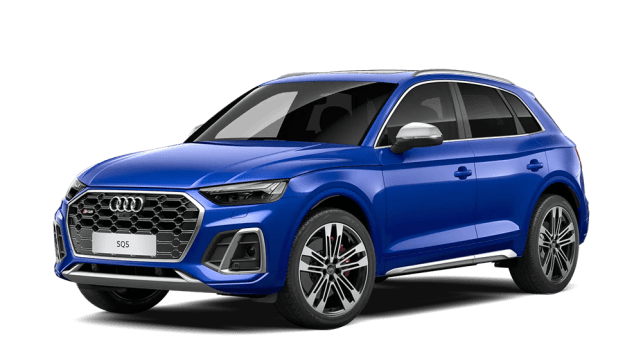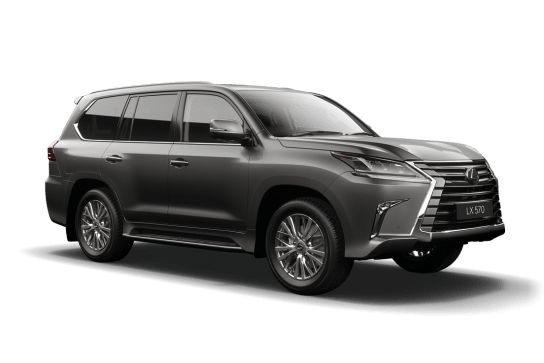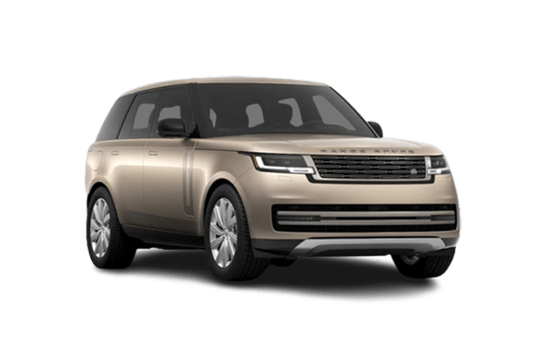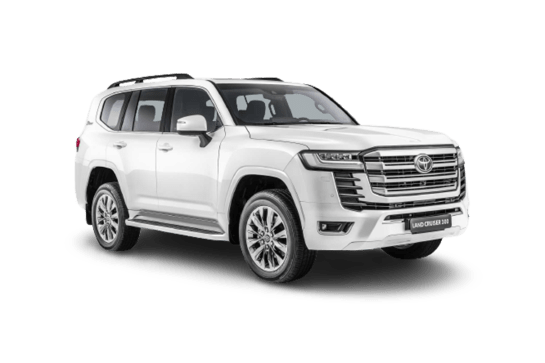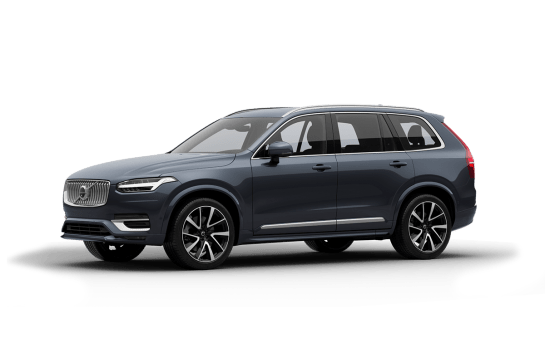
Porsche Cayenne VS Toyota Land Cruiser
Porsche Cayenne
Likes
- Colossal power and torque
- Comfortable and easy to drive family SUV
- Practical and spacious
Dislikes
- Four-seater only
- Gear shifter position
- Short warranty
Toyota Land Cruiser
Likes
- Handsome roadside presence
- Lots of practical and luxe features
- Pleasant on-road manners
Dislikes
- Servicing schedule is a pain
- Expensive compared to rivals
- Limited customisations with styling
Summary
Porsche Cayenne
The Porsche Cayenne Turbo GT needs a better name. This is the king of Cayennes and quite possibly the ruler of all super SUVs.
Well, the Cayenne Turbo GT is the fastest SUV around the Nurburgring Nordschleife. Not just that, it has such colossal power and torque it'll be side-by-side with a Porsche 911 GT3 RS in a sprint from 0-100km/h. No, a better name for this SUV would be the Cayenne GT3.
Which is perfect for me because I'm at the point in my life where although I love full-on and noisy cars I also have a full-on and noisy family.
Read more about
- "Who would have thought Porsche would go electric?" Porsche boss hails Taycan's "overwhelming success"
- Porsche doesn't need support from Volkswagen or other sports car brands on eFuels - but Lamborghini, Bentley and more could all benefit from it in the end
- When is the new Porsche Cayenne electric car coming? Timing confirmed for new BMW iX, Kia EV6 rival, and more details on new larger electric SUV revealed!
We lived with the Cayenne Turbo GT for a week to find out if this super SUV was also a super family car - from practicality to safety.
We're also a family with ridiculously high expectations of luxury SUVs having lived with and tested each of the Cayenne Turbo GT's rivals - from the Lamborghini Urus and Bentley Bentayga to the Aston Martin DBX and Alfa Romeo Stelvio Quadrifoglio.
| Safety rating | — |
|---|---|
| Engine Type | 4.0L turbo |
| Fuel Type | — |
| Fuel Efficiency | 12.5L/100km |
| Seating | 5 seats |
Toyota Land Cruiser
Australia has a long established love affair with the Toyota LandCruiser. The first owner was Sir Leslie Thiess, and he bought it to assist in the construction of what was, and still is, considered one of the most complex hydro schemes in the world - the Snowy Hydro Scheme.
Due to its proven ability to tackle some seriously hard terrain, it soon became almost synonymous with ruggedness and unbridled grunt.
Naturally, with a history like that there's some healthy rivalry between LC owners and, well, everyone who doesn't own one.
Read more about
- Toyota suspends shipments of HiLux, LandCruiser and more after 'irregularities' found during engine testing - Toyota Australia seeking information on local impact
- Coming soon! Is a Toyota LandCruiser using a hydrogen-fuelled combustion engine under study by the brand?
- Toyota to resume diesel engine production for HiLux, LandCruiser after Japanese government lifts shipment suspension
There have been no updates for the 2024 Toyota LandCruiser 300 Series but it's competing against heavyweights like the Nissan Patrol, Land Rover Discovery and the Toyota's cousin, the Lexus LX. All of which have seen some decent overhauls with tech or mod cons recently.
My family of three have been family-testing the GR Sport grade to see if the LC300 lives up to the legend or if it's competition is starting to nip at its heels.
| Safety rating | |
|---|---|
| Engine Type | 3.3L turbo |
| Fuel Type | Diesel |
| Fuel Efficiency | 8.9L/100km |
| Seating | 5 seats |
Verdict
Porsche Cayenne8.1/10
Of all the super SUVs I've piloted, the Porsche Cayenne Turbo GT is the best all-rounder in terms of performance, comfort, cabin technology and style.
As a family car it's roomy, practical and easy to use and drive daily.
As a performance car the Turbo GT is stupidly quick, with the agility of a sports car. Sure, a 911 would leave it behind on a twisty race track, but this SUV is close to having that sportscar experience and keeping your family, as well.
Toyota Land Cruiser8.4/10
The Toyota LandCruiser 300 GR Sport is a total knockout when it comes to its looks, comfort and practicality. It’s stupidly easy to drive and has a fuel efficiency that should make you swoon but the servicing is a bit annoying and it’s not the most affordable option on the market. However, even though it hasn't benefited from any updates this year, you don't feel like you're missing out on any luxuries.
My son adores it, wants it and will be very disappointed when we hand it back. Naturally, he gives it a 10/10.
Design
Porsche Cayenne
This might be a personal thing but to me nearly all Porsches look better from the back than the front.
It's the wide stance and powerful haunches, the hunkered down suction-capped-to-the-road look that does it for me and the Cayenne Turbo GT, despite being an SUV, passes this important Porsche checklist item.
The GT aero kit only serves to make this SUV look more of a beast, and the gold-bronze looking satin Neodyne wheels are a Porsche theme that I've not always been a fan of, but I get the historic connection.
If only the Turbo GT could look a little less like other Cayennes from the front. This is the king of the SUV range and despite the apron and bumper already being exclusive to this model, there should be more.
Vents in the wheel arches, carbon bonnet with nostrils GT3-style perhaps? Or is that going too far? If you do want something more lairy then there's always the Urus.
The Cayenne Turbo GT's cabin is stunning in its plushness and modern surprises such as the passenger display, the hoodless instrument digital cluster, the lashings of Race-Tex upholstery everywhere. It's perfectly Porsche. High-performance meets high-end.
It's also highly practical. Let's talk about that.
Toyota Land Cruiser
Design is 100 per cent subjective. I love the look of the LC300 GR Sport because it features what I feel is a timeless, handsome shape.
For some, it may look too big and brutish, because you could throw a bunch of beefy words at it, and somehow, they’d all fit the roadside presence of this extra-large SUV.
What visually sets the GR Sport apart from its siblings are the multitude of black accents across the body from the rear badging, wheels and arches, door handles and roof racks. The grille is also distinctly different in its horizontal design with the Toyota badging capitalised in a bold white font for extra effect.
Head inside and the cabin looks ruggedly capable with the dimensions of the centre console and dashboard complementing the external looks.
Technology looks upmarket, joinery is solidly put together and the leather upholstery adds to the plush comfort of the seats but there is a sense of capability in the physical buttons and dials still found on the dashboard.
Which is where I start to really like the LC300 GR Sport because everything is where you expect it to be - this is not a car you’ll get flustered in but nor does it have that generic Toyota look.
Practicality
Porsche Cayenne
The Porsche Cayenne Turbo GT only makes one compromise on practicality and that's the removal of the middle seat in the back, which, with just two kids isn't used all the time but on average we might need it once a week for school mates and cousins.
Instead of a middle seat there is a shallow tray, which will fit a phone or in our case leaves and rocks found at the park.
So, yes, the Turbo GT is a four-seater only, but this is a spacious, large SUV with good head and legroom, wide-opening doors for easy entry and exit, and air suspension which can raise and lower the height for easy access.
Storage is excellent with enormous door pockets in the front and back and there are four cupholders.
There's a wireless phone charger in the front and two USB-C ports as well, plus two USB-C sockets in the back.
Four-zone climate control means the kids in the back can set their own temperatures. They also have heated seats.
I was disappointed to see there aren't sunshades for the rear windows - pretty vital in Australia where it feels like we're only about 50 metres away from the sun.
The Turbo GT's 576-litre boot just managed to fit our pram and a week's shopping, which is our minimum standard for living. Any more space is a bonus.
Toyota Land Cruiser
The front row is roomy and even with a co-pilot, you feel like you have yards of space to settle into. The seats offer a wide seat and plush padding, as well as heat and ventilation functions which adds comfort for longer trips.
Individual storage is good with a large glove box, two cupholders, two drink bottle holders and a large middle console that also features a 'cool box' function for drinks or snacks.
The comfort of the front is replicated in the backseat, which deftly accepts the height of my 183cm father. The width of the seat can easily accommodate three adults in relative comfort or, if you have a few tots in tow, three child seats.
Amenities and storage in the back row are what you'd expect for a top model in this class. The rear outboard seats feature heat and ventilation functions and there is dual air-conditioning and climate control, as well as, four directional air vents.
The fold-down armrest features two cupholders while the doors hold a drink bottle each and a small storage bin. There are also two map pockets and you can access the middle console cool box with a rear-mounted button.
The GR Sport does remind you that it's a big car with its 235mm ground clearance and my seven-year-old son declared I needed to hold all of his stuff this week as getting in and out is a ‘two-handed- operation'. Like him, I too am grateful for the grab handles and side steps in this car.
The technology is well-rounded and simple to use. The 12.3-inch touchscreen multimedia system looks great and is responsive to touch. It has built-in satellite navigation and a Toyota Connected Services app with three years of complimentary updates. There is also wired Apple CarPlay and Android Auto, AM/FM radio and DAB+ radio but there’s not much else to access in this system.
The mostly analogue instrument cluster features a 7.0-inch tech screen and this is where you can do a lot of your customisations with display and safety.
The charging options are solid up front with the choice of a USB-A and C port, 12-volt socket and a wireless charging pad. The rear gets two USB-C ports and a 12-volt socket as well.
The boot is cavernous with its 1131L of luggage capacity and that’s with all seats in use. The squared shape of the boot and the 90-degree angle the boot lid opens to are quite practical, especially when fitting bulky items or loading things in the rain.
All GR Sports come with a powered boot lid and a domestic 220-volt socket for charging larger items while adventuring.
Price and features
Porsche Cayenne
The Turbo GT is the king of Cayennes, so it shouldn't surprise anybody that it's also the most expensive with its list price of $364,700.
Lamborghini's Urus lists for $409,744 and is the Cayenne Turbo GT's not-so-subtle Italian cousin, sharing the same platform and engine.
Both are in my mind the best performance SUVs on the planet. It just depends how conspicuous you want to be.
Then there's Bentley's V8 Bentayga which isn't blessed with the Porsche's good looks but would still be all over the Cayenne if the two happened to meet at a race track.
So, why is the GT Turbo the king of the Cayennes? What makes it better? For all the reasons you'd think - it's the fastest, most powerful, most luxurious and most equipped Cayenne in the range.
We'll get into mind-bending engine and performance specs soon, but first let me take you through the standard features on a car that's anything but standard.
Coming standard and exclusively to the Turbo GT are 22-inch 'GT Design' wheels in satin 'Neodyne' with full-colour Porsche centre caps, an active rear spoiler, Turbo GT front apron, dual titanium exhaust, rear apron with diffuser, 'SportDesign' side skirts, wheel arch extensions, a lightweight carbon roof and tinted LED HD-matrix headlights.
Inside, and also exclusive to this grade, is the 'GT Interior Package' with 'Race-Tex' upholstery throughout with 'Deep Sea Blue' stitching on the front seats and centre console and the armrests and dashboard.
There's also the 'Carbon Interior Package' which includes dashboard and door trim elements.
Race-Tex trim is applied to the 'GT Sports' steering wheel, roof lining and gearshift, too.
The adaptive active air suspension, which can lower the car by 15mm, is standard and only available on the Turbo GT, too.
The soft-close doors are standard (a cost option on lower grades), as are the stainless steel pedal covers.
The rest of the features are also found on lower grades and include the 12.65-inch digital instrument cluster, head-up display, proximity unlocking, 12.3-inch multimedia touchscreen with sat nav, wireless Apple CarPlay and Android Auto, digital radio, a 10-speaker Bose sound system, heated front seats, rear privacy glass and an auto tailgate.
Four-zone climate control is standard on the GT Turbo, too, and so are heated rear seats.
Our car had several options fitted such as the front passenger display ($2860) and the Deep Sea Blue Accent Package.
The passenger display is a crowd pleaser, but as a family car my kids felt like they were missing screens in the back seats, too. Well, in my day...
Toyota Land Cruiser
The LC300 series is offered in six grade levels for our market and the second-from-top-spec GR Sport model (the Sahara ZX is slightly more expensive) is on test here. It’s priced from $145,876 before on-roads which is almost $4K dearer than last year’s pricing but doesn’t feature any new upgrades.
Its price point also positions it more towards the top-end of the upper-large SUV market, compared to its rivals. Sitting at the top of that list is the Lexus LX500D F Sport at $180,061 MSRP and then the Land Rover Discovery D300 at $129,020 MSRP.
The most affordable rival is the Nissan Patrol Warrior for $104,160 MSRP but it's important to note that the Patrol is only available with a hefty 5.6L V8 petrol engine, there's no diesel variant. Which is something to consider when you're at the bowser.
In terms of luxuries, there is a heated steering wheel, powered front seats with heat and ventilation functions, leather upholstery and synthetic leather trims throughout. The rear outboards seats also have heat and ventilation functions and a sunroof comes standard.
The technology looks premium with a 12.3-inch touchscreen multimedia system and a 7.0-inch digital instrument cluster headlining the dashboard. There's some 'old world' charm with the CD/DVD player at the front.
Tech is rounded out by the wired Apple CarPlay and Android Auto, built-in satellite navigation, Toyota Connected Services App, head-up display, three USB-C ports, one USB-A port, two 12-volt sockets and a wireless charging pad. There is also a 220-volt domestic socket located in the boot and a premium 14-speaker JBL sound system.
The key practical features include a powered tailgate, cool box (middle console), four-zone air-conditioning and climate control, push-button start, keyless entry and a full-size spare wheel.
Under the bonnet
Porsche Cayenne
As a middle-aged parent with two children, a Porsche that I don't have to crawl into and out of like a cubby house is a great thing.
What's even better is that this ‘easy access' Porsche is every bit as brutally powerful and fast as the quintessentially ‘pure' Porsche, the 911. Actually, it's more powerful and faster.
The Turbo GT's twin-turbo 4.0-litre V8 petrol engine makes 485kW and 850Nm with drive going through an eight-speed transmission to all four wheels.
In comparison, a Porsche 911 GT3 RS, arguably the most brutal and anti-social 911, has 386kW/485Nm.
I haven't made a mistake. Those are the real numbers. And it's only when you step on the accelerator in the Cayenne Turbo GT, and it feels like somebody's sat down on your chest, that you realise what a big deal this is.
That is such a colossal amount of oomph that this 2.2-tonne family SUV can accelerate from 0-100km/h in 3.3 seconds.
The 911 GT3 RS can do it in 3.2 and it has a roll cage and a fixed rear wing the size of a bedroom door.
And yes, we're now coming into a digital age where Teslas and other electric SUVs are quick, too, but can they go around corners like a Porsche Cayenne Turbo GT?
Do they have the same rumble and roar as a twin-turbo V8 that's terrifying and enticing at the same time.
The correct answer is, absolutely not.
Toyota Land Cruiser
The LC300 models all share the same 3.3-litre V6 twin-turbo diesel engine that produces a hefty 227kW and 700Nm of torque. Making it powerful enough to easily handle its 3.5-tonne braked towing capacity.
The GR Sport has a 10-speed auto transmission and has a full-time 4WD system with high and low range. It also has front, rear and centre diff locks, so adventuring pursuits should be a breeze but check out Crafty’s off-road review on this model for more 4WD insights.
Efficiency
Porsche Cayenne
Seriously? This is a 2.0-tonne twin-turbo petrol V8 with a 90-litre fuel tank. Even the Porsche specs sheet doesn't understand the question because in the column for fuel efficiency there are three letters - tbc.
My own testing saw me record 22.5 L/100km at the fuel pump, which means I enjoyed driving the car very much.
A little digging around reveals Porsche globally claims the Turbo GT will use 12.6L/100km, over a combination of open and urban roads.
You might not have as much fun as I did but easing back a little might get you closer to the 700km of range this more frugal consumption figure appears to offer.
While efficient it isn't, I'm not going to mark the Turbo GT too much here because compared to its petrol rivals the fuel consumption is what I'd expect from such a high-output heavy SUV.
Toyota Land Cruiser
It's big and has a lot of power, so it should be pretty thirsty ... right?
Wrong! The official combined fuel-cycle consumption figure is 8.9L/100km and my real world usage came out at 9.8L/100km after doing a mix of long open-road trips and some urban stuff.
Based on the official combined fuel cycle and the two fuel tanks, which equal 110L, you’d be able to get a theoretical driving range of 1236km.
Driving
Porsche Cayenne
Never have I met a car this powerful and superbly athletic that is as pleasurable to drive alone on great, fast roads as it is to pilot at 50km/h in the suburbs with a family on board.
It exceeds my understanding of engineering that something this large can move so quickly. That in an instant can turn and tip into a corner with such precision and effortlessness.
Yet it can switch seamlessly and happily to coping with speed bumps and potholes, delivering a ride so comfortable it'll send babies off to sleep. And it did.
The only issue, and this is such a tiny thing, is the dash-mounted gearshift, which means having to reach up and select Drive or Reverse or Park, which, when executing a three-point turn, is necessarily frustrating.
Still, I'm giving the Turbo GT a 10 out of 10 for driving under all conditions, and we didn't even go off-road, which of course you can do, as long as it's not too wild.
Toyota Land Cruiser
The GR Sport is a massive car but it doesn’t handle like one. That's not to say it handles like a small car but it doesn't feel like a truck to drive.
The power is effortlessly gutsy and there's no issue keeping your speed consistent on hills. The 10-speed auto transmission manages its gear changes and power hits smoothly. The rumble of the V6 engine is also quite therapeutic when it comes time to tackle an overflowing causeway or muddy road.
The GR Sport feels solidly grounded and even on winding roads, the roll in corners isn’t bad at all. Less so than a Prado, actually.
The ride comfort is very good in the GR Sport grade as it has special adaptive suspension and that means that you really aren’t bothered by the road surface. Besides some whistling from the roof racks, there’s also little outside noise and it feels refined in the cabin because of it.
The wide windows and high seating position offers great visibility all around but I'm very aware of how large the car is as I can't see my son when he walks around it. The sensors alert you but make sure all kids are accounted for before you start moving.
Despite its size, the GR Sport is very nimble to manoeuvre with a small 11.8m turning circle and steering that is responsive.
Parking has been no issue for me this week and while the 360-degree view camera is a bit too fish-eye lense for me, its clear and you get used to it pretty quickly.
Safety
Porsche Cayenne
The Porsche Cayenne Turbo GT hasn't been locally crash tested and so doesn't have an ANCAP rating.
That's quite normal for super high-end cars. But, when this third-generation model first arrived in 2017 it was tested by ANCAP's European equivalent, Euro NCAP, and was awarded the maximum five stars.
There's AEB which operates at city, urban and highway speeds, and lane keeping assistance, and lane change assistance which is a form of blind-spot warning, and adaptive cruise control. You can option rear cross-traffic alert, as well.
A space saver spare wheel is under the boot floor.
Toyota Land Cruiser
The GR Sport is the only grade not covered by the LandCruiser 300 Series' 2022 five-star ANCAP safety rating.
Toyota doesn’t have any plans to get it rated but it still features all of the safety equipment of its top-spec Sahara siblings.
Standard items include AEB, adaptive cruise control, lane keeping aid, lane departure alert, traffic sign recognition, blind-spot monitor, rear cross-traffic alert, 360-degree camera system, trailer sway control, parking sensors (front and rear), and a rear parking support brake.
Other safety highlights include an alarm system, SOS emergency call button, stolen vehicle tracking and an automatic collision notification system.
The GR Sport has 10-airbags but misses out on the newer front centre airbag.
There are ISOFIX child-seat mounts on the rear outboard seats and three top-tether anchor points. You can absolutely get three child seats installed but you miss out on a third row due to the grade level. Which might be a bummer for larger families who are wanting this spec.
Ownership
Porsche Cayenne
The Cayenne Turbo GT is covered by Porsche's three-year, unlimited kilometre warranty, which is lagging behind in terms of duration even compared to other luxury brands such as Mercedes-Benz, which offers five years.
Servicing is recommended annually or every 15,000km, although there isn't a capped price maintenance plan with final costs determined at the dealer level (in line with variable labour rates by state or territory).
Toyota Land Cruiser
The GR Sport comes with a five-year/unlimited kilometre warranty and if you stick to your service schedule, you get an additional two years of engine coverage.
There is capped-priced servicing for up to five years or 100,000km, which entails a total of 10 services or two a year as servicing intervals are a pain at every six months or 10,000km, whichever occurs first.
Services are $400 which equates to $800 per year, which is a bit expensive but not outrageous for the class.


